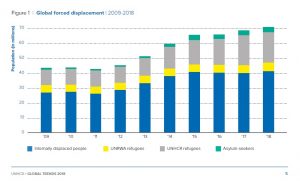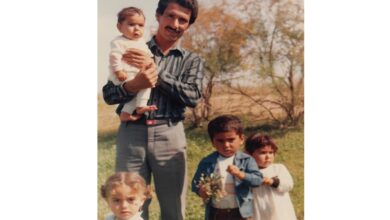UN website reported that, in 18 June 2018, UNHCR published its annual report by the title “Global Trends” on refugees around the world in the 2018.
Based on this report, the number of refugees around the world reached to 70.8 m in 2018 and there is an increase of 13.6m in comparison to 2017.
In 2018, 10.8m people were internally displaced and there were 2.8m new refugees and asylum-seekers, So 37,000 people being forced to flee their homes every day in 2018. By the end of 2018, about 3.5 million people were awaiting a decision on their application for asylum.
The refugee population under UNHCR’s mandate has nearly doubled since 2012. And 67% of refugees were from only five countries: Syria, Afghanistan, South Sudan, Myanmar and Somalia. 4 out of 5 refugees around the world lived in countries neighbouring their countries of origin.
The solutions that have been indicated in the report are Local integration, Resettlement and Return. In 2018, total of 593800 returned to their country which has decreased, compared to 2017 that was 667400. In 2018, 92,400 refugees were resettled to 25 countries. Canada admitted the largest number of resettled refugees (28,100). The United States of America admitted 22,900 refugees, Australia admitted 12,700 refugees, the United Kingdom admitted 5,800 refugees and France admitted 5,600 refugees. On the last response, during 2018, a total of 62,600 refugee naturalizations were reported – lower than the 73,400 reported in 2017.
Statistics in this report show the vast size of refugees and the lack of perpetual responses for the refugee crisis around the world. UNHCR’s responses are unable to solve that problem. There is no solution to the refugee crisis with millions of them around the world and hundreds of them being naturalized.
Two-thirds of refugees from that five countries indicates that war and military conflicts are the main causes refugee crisis and attention to the problem of war and creating peace is the best solution for this crisis.






